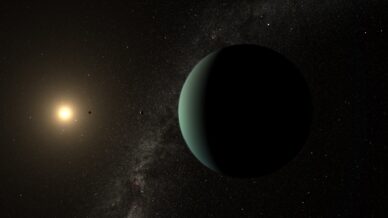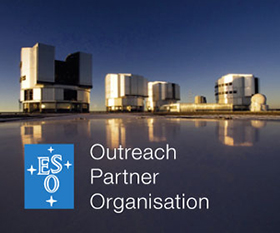
Euclid Space Telescope reveals multiple discoveries
Based on 34 articles published today, the Euclid Consortium, which includes several Instituto de Astrofísica e Ciências do Espaço researchers, revealed a large number of new scientific results
Read more

First 3D observations of an exoplanet’s atmosphere
In an article published today in Nature, a team, with several Instituto de Astrofísica e Ciências do Espaço researchers, was able to map three separate layers in the atmosphere of exoplanet WASP-121b
Read more

ESPRESSO detects super-earth in the habitable zone of a Sun-like star
The exoplanet HD 20974 d, discovered by a team that includes several Instituto de Astrofísica e Ciências do Espaço researchers, has an orbit
Read more

James Webb Space Telescope offers best glimpse into the ice of the early Solar System
A team that includes an Instituto de Astrofísica e Ciências do Espaço researcher used the James Webb Space Telescope to identify, categorize its chemistry, dynamics and place of birth of a few Trans-Neptunian Objects
Read more

Portuguese researcher participates in the planing of a NASA telescope
The Roman space telescope will have a contribution from the European Space Agency (ESA), which selected for one of the committees of this north-American consortium a researcher of the Institute of Astrophysics and Space Sciences (IA) for his experience in the Euclid Consortium.
Read more

New technology from IA closer to go into orbit
European Space Agency (ESA) approved the first prototype of a precision system for the largest X-ray telescope, developed by a team led by the Institute of Astrophysics and Space Sciences (IA).
Read more

Portugal hosts the world’s largest conference on space weather.
The world’s largest conference on the perturbations from Space and their social and economical impact takes place in Coimbra and is co-organized by the Institute of Astrophysics and Space Sciences (IA).
Read more

A rare Venus solar transit helps unravel atmospheres outside the Solar System
A team led by the Institute of Astrophysics and Space Sciences (IA) analysed data from this century’s last Venus solar transit and validated methods to study the atmosphere of Earth-sized exoworlds.
Read more

